[Update – June 2019: At this point I do not recommend this trainer. While the feel is good and mostly it’s fine, it is inaccurate in ERG mode (structured workout mode). It is fine in simulation mode, which is what Zwift uses when not in a structured workout. But for any structured workout in Zwift, TrainerRoad, Sufferfest, or other apps, it will be inaccurate by upwards of 10%+. Tacx is aware of this issue, but does not have a timeframe for a fix.]
While much of the attention in the Tacx booth today at Eurobike was on the soon to ship Tacx Neo Smart Bike, there was also a lonely trainer swirling around quietly in the corner – the new Tacx Flux 2 Smart. This unit squeaked just in time to the show to be able to be put up on a pedestal (literally) – but wasn’t yet in riding condition.
Still, it’s worthwhile taking a look at the specs and seeing where they stand compared to the other mid-range entrants that are on the scene. After all, it was just a few weeks ago that Tacx reduced the price of the original Tacx Flux from $899 down to $799. Meanwhile, this new Flux slots right in place price-wise where the original unit left off – resuming the $899 spot. A spot that is mirrored by Wahoo’s latest entrant today, the KICKR CORE as well as Elite’s Direto trainer – all of which are direct drive trainers.
The Tech Details:
As I said up above, there wasn’t an opportunity to ride the unit yet – so the jury is still out on that. And even that aside, the reality is this is a very minor evolutionary update of the Tacx Flux trainer, rather than some huge shift. And that makes sense given how deep the Tacx lineup is in terms of numerous models (I’d argue, probably too many models – almost like Elite was years ago). They’re having to be careful to not step on the toes of other units.
In any event, the changes here are actually pretty good – even if they are small in number. The following items have been changed from the original Flux Smart:
– Dramatically decreased speed you can maintain 15% grade at from 50KPH down to 10KPH (more on this in a second)
– Changed simulated flywheel mass from 24.7KG to 32.1KG (this impacts road like feel)
– Lowered the trainer resistance floor (ideal for smaller folks trying to do intervals with lower wattages)
– Increased sprint support up to 2,000w vs the 1,500w
– Now including thru-axle adapters in the box (versus separate as accessory)
– Increased long cage derailleur support
– Pile of internal improvements like tweaking tension roller which slightly impacts feel and accuracy during sprints
Some of these aren’t necessarily box-listed stats like change to accuracy (+/- less than 3% still the same), nor crazy things like 24% incline. But in reality, the changes made here are actually probably more important.
Take for example the speed change for maintaining 15% grade. That’s actually much bigger than folks realize. See, the deep dark secret with trainers is twofold. Part of it is that Zwift by default halves the trainer difficulty level. So when you see 8% grade, its actually only giving you 4% grade and then virtually slowing your speed down.
Why does it do this? That’s the second part: Most trainers aren’t really designed to handle very low speeds at high gradients. So the mid-range trainers and lower end trainers especially suffer here, and can’t hold the inclines they say at the lower speeds. For example, the Flux 1 can technically hold 15% grade…but only if you were going 50KPH. Which of course nobody is doing.
So bringing that entire range down to 10KPH is a massive shift. That’s a realistic value, and thus you can realistically make that work at 100% trainer difficulty (versus the default halved value on Zwift).
Likewise, the shift to the trainer resistance floor is useful for smaller athletes that may have lower FTP values. Meaning, they’re putting out less wattages. Previously they’d have to find a gearing combination that allowed them to go to lower watts during the recovery portion of intervals. But sometimes doing that meant that the trainers didn’t react as fast. So it was a double-edged sword. This lowers that ‘resistance floor’ as it’s known significantly.
In talking with Tacx they showed charts of how they’re starting to re-architect their trainers a bit to focus more on the specific zones people are actually riding in, rather than going for mythical 24% at 50KPH type specs. I’ll be digging into this a bit more, as they’ve produced some pretty interesting data sets and assumptions about where people are actually training. But stay tuned for that more down the road as I’d like to make it more about industry trends than just what Tacx is doing.
Oh – and before I forget, the trainer supports all the usual stuff you’ve come to expect:
– Dual ANT+/Bluetooth Smart support, including FE-C and FTMS, plus power/speed/cadence broadcasting
– Axle Compatibility: Race 130mm, MTB 135mm, 142x12mm, 148x12mm
– Cassette compatibility of 8 through 11 speed cassettes (you do have to supply your own)
– Max 15% supported incline
– Max 2,000w supported resistance
– Requires power cable/be plugged in
– Requires calibration/spindown occasionally (unlike Tacx Neo)
Ultimately, as I said above, the changes here on the Flux 2 may appear minor (especially cause it looks almost identical), but are kinda like the shift from the KICKR 2017 to KICKR 2018 – behind the scenes impact of those changes is actually quite important. In the case of Tacx with the Flux 2 it makes the trainer highly appealing to those focused on climbing, or in the case of Wahoo’s KICKR changes it makes it appealing for those that appreciate their hearing. But that’s a whole different topic.
Wrap Up:
Of course, there’s plenty of history with the Flux lineup. It got off to a very rough start with the first generation units for the first few months suffering all sorts of manufacturing QA problems. Tacx eventually sorted those issues out and since then the Flux has found smooth sailing and plenty of popularity. Still, there’s a pile of testing that I’ll be looking forward to digging into once I get my hands on a rideable unit. At the show, the only thing rideable about the Flux 2 shown there was the turntable it sat on.
It sounds like Tacx will be releasing the Flux 2 in low volumes from September, and then at full volume from October. That’s a bit late in the trainer season curve, even assuming there’s no delays or the like. Hopefully they can keep things on the straight and narrow.
Either way – between the new KICKR CORE and the Tacx Flux 2, alongside the Elite Direto – it’s shaping up to be a really strong year at the $899 price point. Let the battles begin!
Found This Post Useful? Support The Site!
Hopefully you found this review/post useful. At the end of the day, I’m an athlete just like you looking for the most detail possible on a new purchase – so my review is written from the standpoint of how I used the device. The reviews generally take a lot of hours to put together, so it’s a fair bit of work (and labor of love). As you probably noticed by looking below, I also take time to answer all the questions posted in the comments – and there’s quite a bit of detail in there as well.
If you're shopping for the Tacx Flux 2 or any other accessory items, please consider using the affiliate links below! As an Amazon Associate I earn from qualifying purchases. It doesn’t cost you anything extra, but your purchases help support this website a lot.
And finally, here’s a handy list of trainer accessories that most folks getting a smart trainer for the first time might not have already:
And of course – you can always sign-up to be a DCR Supporter! That gets you an ad-free DCR, access to the DCR Shed Talkin' video series packed with behind the scenes tidbits...and it also makes you awesome. And being awesome is what it’s all about!
Thanks for reading! And as always, feel free to post comments or questions in the comments section below, I’ll be happy to try and answer them as quickly as possible. And lastly, if you felt this review was useful – I always appreciate feedback in the comments below. Thanks!




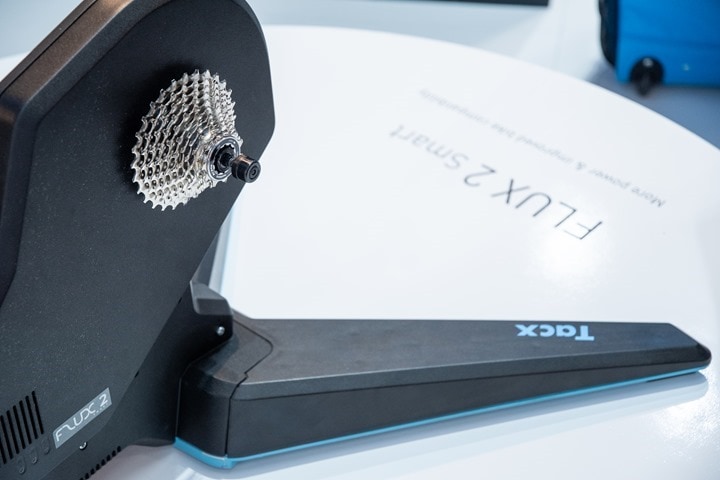
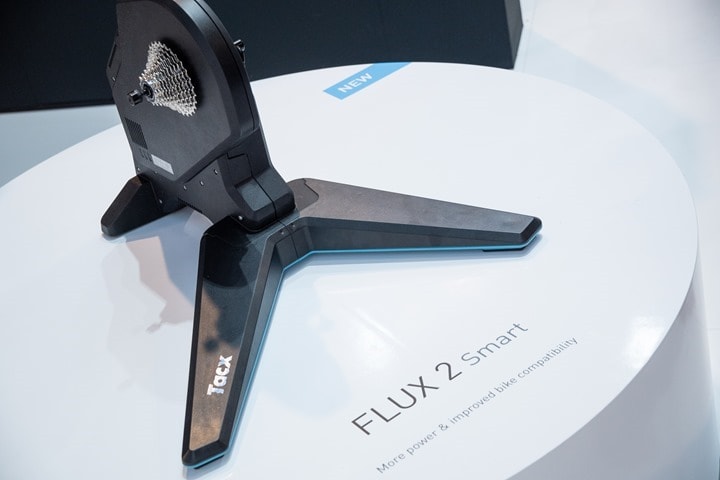
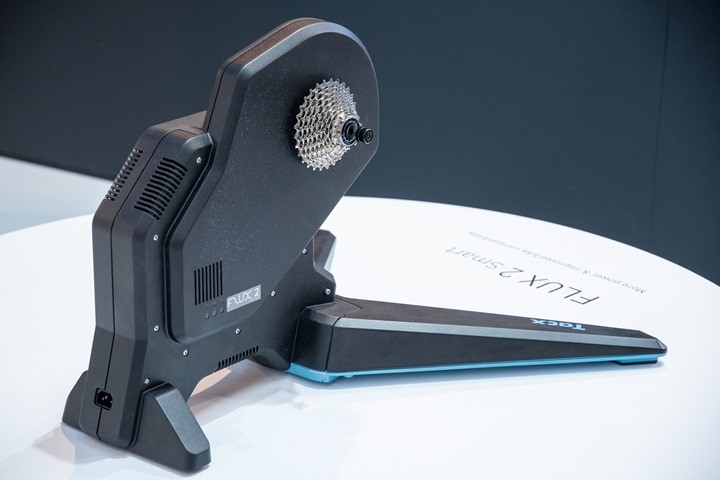
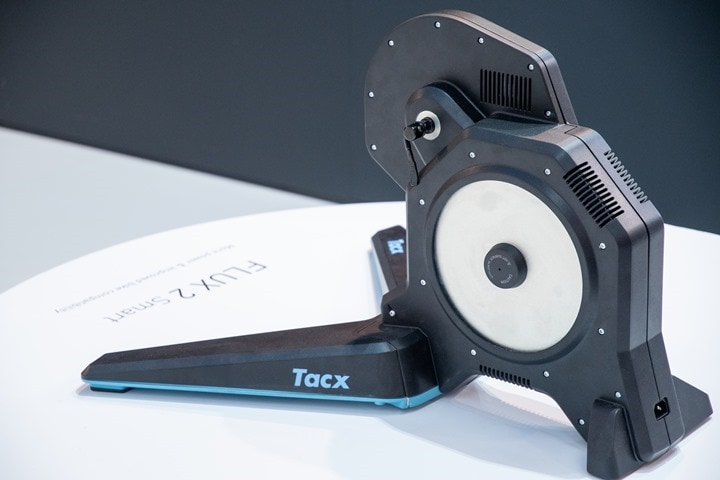
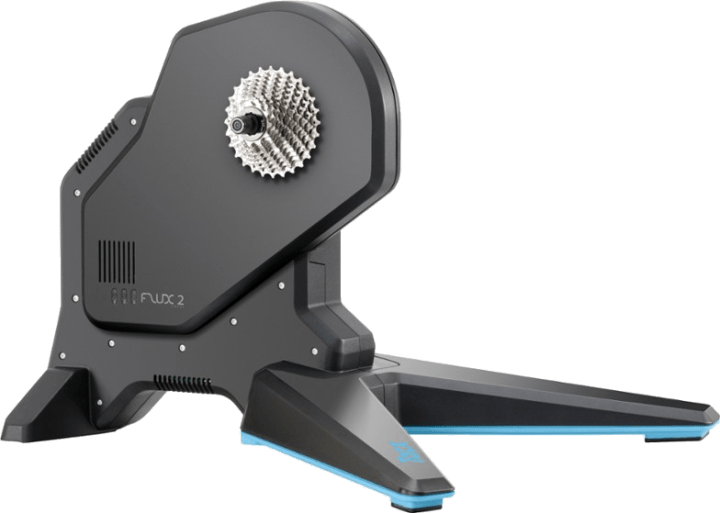
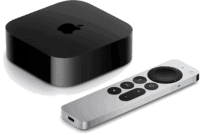

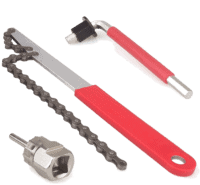

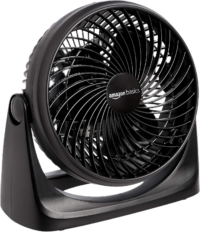

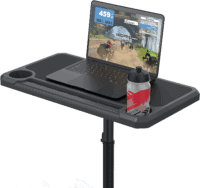
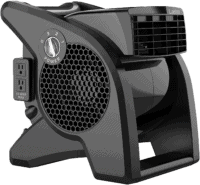
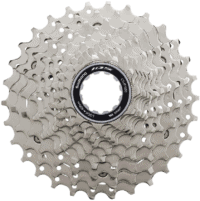
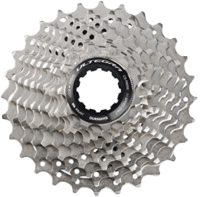
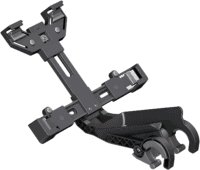





















I wonder what’s the noise situation like with the new model.
They’re saying the same as previous Flux (thus, so-so). The unit on the show floor unfortunately wasn’t rideable.
Nothing about reliability improvements?
Most of that you saw inline within the Flux 1 manufacturing over the course of time, especially in that first year. I’ve heard essentially zero complaints in the last 8-12 months from folks on the Flux 1.
I have just received Flux #3. It was built in the past few weeks apparently. First 10km was nice and silent and now a sound is starting to come from the unit. I’m going to give it a bit more time to see if it settles but these units are still far from being fault free.
I had two Flux since september 2017 and decided to go for a Neo due to problems with the Flux. Worst experience ever in terms of product and customers service.
In a Flux x Direto x Kickr Core, my problem with the Flux is that it does not fold for storage. The Direto is just too noisy for the apartment. These are both eliminators for me personally.
I think Wahoo will have a great success on the hands with the Core if there’s no flagrant fault with it.
Agree. The fact that the Core is silent is the knife.
I agree with you, that the Direto is noisy. But he is only in high gears with a fast spinning flywheel noisy. I use the direto only for interval-training and i always use the lowest gear and have no complaints from my neighbours.
Before buying a flux people probably would want to do some research and see the feedback from this facebook group link to facebook.com
good luck for the new version I had 3 replacement of the flux v1 and this has been quite a nightmare
Yea, I too have been concerned with the quality control of the Flux. Check the Amazon reviews as well, really terrible. I love Ray’s reviews, but they are N=1 and are not indicative necessarily of overall failure rates… do your due diligence before dropping your money imo.
+1
I found Flux 1 prices dropped as low as 550 Euro, and thought all early problems solved. Reading comments above, I started thinking I better go with Direto for 610 Euro.
The 15% @ 10kph is a big thing for me. How does this compare to the Neo, is it even better in this respect?
Would also love to have a direct comparison of the main contenders (wahoo kickr, Tacx neo, etc.) on this specific topic. I do train for mountainbike and am very often confronted to high slopes which require high power at very low speeds (~350W / 6kph / 80rpm). Is there anywere to look for such documentation (max power vs speed) ?
Yup, on the near-term docket for sure.
Ray, it would be great if, for you next trainer guide, you could find a way to compare max incline at a realistic speed. I bought a CycleOps Magnus thinking that the spec’ed 15% max incline would be more than enough. But In reality it maxes out at maybe 9% when going 6 or 7mph (and me weighing 180lbs). That is a huge discrepancy between the spec and real usage
Yup, that’s exactly what I’m working on (with multiple companies). It’s a bit trickier than folks want to make it seem, to ensure you can correctly compare against multiple companies/trainers.
But that’s the idea, and all the trainer companies I’ve talked to it are down for it.
Hi Rey, How does this compare to the Elite Directo?
In Directo, i will not be able to have the 100% realistic feel on Zwift simulate a 14% ascend?
Thanks
Just a quick question.
What does the spin down consist of for this trainer? My old man has a Neo, and the lack of spin down required is amazing.
I’ve got an entry level Tacx Flow Smart T2240 (and a power meter fortunately) and the spin down requires me to warm the bike (tire) up, then use the app to ride to 30kph (?) and stop pedalling, then I have to tighten or loosen the resistance on the tire to match up with a green line on the app.
Do you have to fiddle with a dial or anything on this when calibrating? Or is is something like a back pedal akin to Power pedals, or Zero offset with a Crank PM?
If it’s anything the same as the Flux 1 (which I would expect!) then it’s very similar to your experience with the Flow Smart (and my old Vortex Smart) but doesn’t require any ‘wheel tightening’. You basically pedal up to speed and then spindown, the offset result is then automatically set/applied by the trainer.
Just to expand and rather than start another comment – Flux 1 owner here since February. Lots of initial accuracy issues which seem to settle down over the first few hundred miles on Zwift. Still not totally happy with it’s accuracy during high power sprints/kicks and the noise but with the hassle of sending it back (again!) I’ve stuck with it. Wish I’d bought a Direto! Now KICKR Core seems another very valid alternative.
When using a power meter as power source, the spin down is not necessary. I just occasionally do spin downs on my wheel-on trainer since i have a power meter. I still keep the tyre-pressure constant to preserve the road-feel and responsiveness, but for smaller deviations of the set incline i don’t care because i have to use less than 100% trainer difficulty on Zwift anyway to avoid slipping at steep sections.
Will all these new trainers handle a bike with disc brakes? My Kickr2 does not. I’ll be replacing it later this year and want to be sure I don’t get a new trainer that does not handle all my bikes.
From above:
Axle Compatibility: Race 130mm, MTB 135mm, 142x12mm, 148x12mm
So I guess as long as you’ve got one of those standards, then you should be ok.
Axle standards and clearance for disc brake calipers are very different things.
Hi Ray,
Will you do a vlog about Eurobike on your YouTube channel?
.
Sorta. I’ll do my annual walk-through of the DCR Eurobike RV (cause that’s fun for me to look back on). Then I’ll also do something down on the Stelvio with what tech I’m using (like last year I did in the Swiss Alps).
But mostly I’ve been doing videos on all sorts of specific Eurobike Tech.
Oh, and I’ve actually got a pre-Eurobike Behind the Scenes VLOG I shot that shows what it’s like at the DCR Cave as all the new stuff comes in. I’ll release that later this week. It’s a one-shot-wonder.
Hi Ray,
I’m in the run for a new trainer for coming winter (still have the older Bushido (not so) smart).
How would you compare the Tacx Flux 2 to the new Wahoo Kickr Core, as in what would you value more:
* Doing high wattages (grades) at lower speeds (Flux 2) or
* Trainer being silent? (Kickr Core)
Thanx
Until I can ride a Flux 2 (probably not till August it sounds like), it’s really hard to say.
I wonder how the tariff threats will impact trainer prices if they become real
We asked that. Tacx has seen no aspect of it’s biz impacted by it.
Most other companies in the space have had no impact either, and even Stages’s impact is very minimal as only a single SKU and even then the way the tariff is it’s not 25% of the retail price, but rather the component price. So mostly negligible.
Still, most companies we talked to are shifting manuf out of China (and were doing it already, largely for non-presidential reasons). Companies are going to Vietnam and Singapore, with a side of Taipei.
Interesting stuff about the high wattages/grades at lower speed. Did not know about this.
How does this compare to the new Kickr(core) and old 2017 Kickr specs? Was it lacking too in that area?
No news about the NEO?
Would like to see at least a handle for better portability. Heck, it’s the only trainer that can be used outdoors without power, but it’s so cumbersome.
Also the disc brake/frame clearance/compatibility should be better. Tacx, are you listening? ;)
Not sure if anyone is still tracking such things but my Tacx Flux bought in late April 2018 was defective, I am going through all sorts of rigmarole to get it exchanged. Tacx (from Holland) have diagnosed it as requiring replacement but naturally the local bike shop in Australia says we won’t take Tacx’s word for it, we have to send it to our distributor who will eventually do something about it. Just hopeless, I don’t see how they’ve really lifted their game at all and would not trust a Flux 2 either.
My experience replacing 2 Fluxes has been quite different. I email my LBS with a video of the noise and ask for a replacement. They forward email to their Tacx rep who arranges the replacement. I get the call its arrived so I take old one in and swap it for the new one. That’s how it should work IMO. At least that’s how it works in NZ.
That’s quite good! I had to really twist the arm of the store today, even with the Australian distributor saying in writing ‘we will provide you a new unit within 3 days’ they were reluctant.
I was quite sympathetic to their predicament but when they had Tacx proper and the local distributor (Sheppard Cycles) saying ‘replace it’ their attitude needed to change..
But they did, and tomorrow I should be able to swap it over, hopefully it’s ok! ;o)
That’s been my experience also in NZ. Took the defective Flux 1 to my LBS. Less than two weeks later I get a call to pick up a new Flux 2.
Hi, Ray
I’m interested in your comments about the shift to the trainer resistance floor, since I’m one of those smaller riders. But I’m no sure I’ve understood. Could you please elaborate a bit on that?
Ray,
On this point:
“In talking with Tacx they showed charts of how they’re starting to re-architect their trainers a bit to focus more on the specific zones people are actually riding in, rather than going for mythical 24% at 50KPH type specs. I’ll be digging into this a bit more, as they’ve produced some pretty interesting data sets and assumptions about where people are actually training. But stay tuned for that more down the road as I’d like to make it more about industry trends than just what Tacx is doing.”
It would be great if you could (maybe you already are) work with TrainerRoad (I’m making the assumption that TrainerRoad has a pretty large user base that would provide a solid sample) to get data from them on actual wattage / speeds that people are using for indoor workouts, and then us that for evaluating trainer performance.
Hello
Just a random question.
Can you control the FLUX 2 with a WAHOO BOLT as control unit?
Fe. changing/increasing or decreasing wattage on the BOLT, changing it also on the FLUX?
Yup.
Shouldn’t easily measurable max torque in Nm being used to compare trainers instead of some mythical grade % ? We can discuss how to ‘correctly’ convert Nm to % for an end user. But when directly comparing trainer to trainer Nm should instantly tell which one is better at ‘grade simulation’.
Totally agree, at the very least all trainer companies need to agree to advertise max % grade at the same speed for the same weight.
Seen posts above – any advice as im looking for my first trainer. Tacx Flux v1 new is now £525, do I get that or wait and and get the core for £699?
Callum, I would be waiting for the Flux 2 or the Core. Don’t touch the v1 Flux. I am in the process of returning my 3rd Flux due to failure.
I like the look of the Flux over the Core but maybe the Core is better tech.-wise?
Cheers, think I will wait for the flux 2 vs core reviews to come out!
Will it be able to handle a long cage derailleur? The old flux could only be used with short cage derailleurs
Is there just one model of the new Flux, my local bike shop (Tacx stockist) informed me that there will be a Flux 2 & Flux S models available?
Where can you find information on other Turbos about what speed you need to maintain to achieve a certain gradient?
Thanks
hi.
how close is the Flux2? at least in Tacx web nothing about it…
It sounds like early October at the earliest.
Aaaand it’s out!
link to twitter.com
Despite mentioned info above it does not have all axel adapters in box!
Ray
If you are in the trainer market for a new direct drive trainer (sub €800,-): which would you recommend at this moment for the comming winter?
– Tacx Flux 1
– Elite Direto
– Wahoo Kickr Core
or hold your money and wait a bit for the Tacx Flux 2 review and decide then?
I can wait a bit, but want to have a new one before the winter.
Thanx,
Devi
(Just copying my answer from the duplicate on the other thread)
In that scenario, it really just depends on how much you care about sound. If that doesn’t bother you (or if you have a loud fan), you could save the 250EUR and pickup the Flux 1 and likely be happy. I would note that if you’re a bit heavier (like solidly 00kg+) and like riding hills a lot, then you might want to look to the CORE instead. But if you’re lighter than that you’d never have an issue.
The CORE will give you a bit more inertia, but again, I suspect most people wouldn’t care a ton if they could spend 250EUR on some other gizmo or gadget. Heck, that buys a new Wahoo BOLT or Garmin Edge 520 (maybe even 520 Plus) these days.
As for waiting for a Flux 2 review, i suspect that’s going to be a while. Like, late October or November at the earliest by the sounds of it.
Ray,
Firstly, thanks for awesome blog and reviews!
Any news when you would review Tacx Flux 2?
Tuomas
Once I have a unit. That was supposed to happen this past week, but hasn’t quite yet. Right now for new trainers coming in, I’m on about a 7-14 day cycle once they hit my doorstep.
Is Wahoo doing the same thing with their Core trainer as Tacx is with the Flux 2 by lowering the power to sustain a 15% grade?
Not sure entirely. The power required is very similiar to that of the KICKR 2017 though, which one doesn’t really hear much complaints in terms of trainer floor or weight ratios.
Hi I can get the version 1 trainer for £405 approx $525 on a deal is it worth the money or should I just wait for the new version to be available. I will use the trainer for sufferfest or Zwift, not sure which at the moment.
Looks like they have changed the Flux 2 into the Flux S. They’ve lowered the price point even more but also downgraded the max power and slope settings. I’m sure DCR will be releasing and update/review soon.
no they are two different units, the flux 2 and the flux s
Only adding a 12mm thru-axle adapter, just when 10mm becomes the norm for road bikes with disc brakes. That seems a bit backwards looking.
Tacx advertises the Flux 2 as being “the most silent flywheel equipped trainer available.” True or false?
I don’t see how that could be accurate.
Is it even a “silent” trainer
I wouldn’t/don’t classify it as such.
Can you offer a preliminary recommendation Kickr Core versus Flux 2?
I haven’t ridden a Flux 2 (even for 2 seconds), so it’s hard to say. But spec-wise I don’t think it’s any better than the CORE, and more importantly for some, it’s not silent like the CORE.
Hello Ray,
are you able to give some more details about the difference between the Flux 2 and the Flux S regarding the resistance floor?
I have a Flux S and this trainer isn’t able to control 80W with a gear ration of 50/23.
Is the Flux 2 able to control this?
Do you have any experience if the Wahoo Core is able to control this scenario?
BR Rainer
Well, it’s now the end of December 2018 and still no Flux 2’s in any retailers (uk) and not one proper review online? Anyone know what’s happening.
John
Actually, some did apparently ship. A DCR reader or two commented they had received units. They were within Europe, but I don’t know which side of the Channel.
Hoorah, they’ve arrived in Aberdeen. Ordered from my LBS!
Yes! I’ve recieved mine 18-12-2018 and like it a lot so far. It’s replacing a Genius Smart so i’ve got a little getting used to the road feel of the massive flywheel instead of a virtual one like on the Genius. Have never ridden the Flux S so do not know how it compares. Keen on reading/watching a review by DCR and Lama :-)
Hello,
I just bought a Tacx Flux 2 and connected this trainer with my Forerunner 935 and my Edge 820. In both cases as a cadence/ speed sensor (and not as trainer on the Edge).
The Edge works fine, but on the FR 935 I have countless speed drop outs. It’s like an on/off signal every half second.
The strange thing is, that this happens also on the FR 935 of my girlfriend. And it’s also strange that both FR works without any problem if they are connected in the same way with my Tacx Neo.
So it’s strange:
– If the problem is the Tacx Flux 2 why it works fine with the Edge 820?
– If the problem is the FR 935 why it works fine with the Tacx Neo?
Has anybody an idea or had the same speed drop outs?
Thanks Rainer
I know the Flux 2 has been slower to ship, but have you had a chance to test this unit yet? I know it compares to the Kickr Core, but given the ESD and noise issues (I know it is limited to approx 3% of trainers) I have been waiting to pull the trigger on either the Core or Flux 2. When will we see a legitimate review?
Yup indeed, pretty recently. I posted a bit on it earlier this week here: link to dcrainmaker.com
I want to get a few more rides in it though before a full review.
Nothing wrong with it per se, but I still think it’s a really tough sell against the KICKR CORE (putting aside any Wahoo issues for the sake of this argument).
Mind you share some of your firts insights on how or why this Flux 2 may be “inferior” to the Kickr Core (putting apart production issues).
The specs seems quite aligned between those devices. On which points the Kickr Core may be better?
Mainly these two:
A) Noise: True to past Flux lineage, the Flux 2 sounds like a gravel grinder. The CORE (assuming it’s not broke) is silent.
B) Road feel: Having been riding the NEO, Hammer, and KICKR’s mostly throughout the fall (which are all in the same ballpark), I forgot how much a step down this is.
There are advantages of the Flux 2 though:
C) It includes cadence in the transmission streams, which is awesome for Apple TV
D) The resistance is stronger than past Fluxes for sure, but I don’t see it as better than the CORE.
I have just purchased a Flux 2 (7/03/19) and waiting on delivery. I have a two year old Kickr Snap and use it regularly. It has been nothing short of a torment to me and the service by Wahoo has been shocking. The until could not function with Zwift, which was the reason I purchased it for in the first place. It kept dropping power circa 15/20 min into a session so you ended up spinning like a hamster with at 100w.
I hope the Flux 2 provides a better more dependable experience.
Keep up the good work.
Thanks
Richard
Ireland
I’ve purchased and received the Tacx Flux 2. It’s my first trainer but happy with it so far. The only problem so far I’ve found is sometimes the trainer puts too much resistance in suddenly on a hill almost bring you to a holt while you grind rapidly down the cassette to compensate! The trainer is super quite in my opinion. I’m running this trainer as stock from the shop without playing with any settings on zwift…..
Will your review of the Flux 2 be online soon?
Looking forward to it
Hi Dave, picked up the flux on Friday last (15/03/19). Unpacked it Saturday. I’m not mechanically minded so fitting the cassette was troublesome. Also keep in mind you will need to know how to adjust the back derailer to make a smooth gear transition. I failed to achieve as I just don’t know what to do. So if you are unclear on this stuff, buy from a local distributor, take the bike in and get them to fit everything. On this point the Wahoo Kickr wins hands down.
Set up with Zwift was a breeze. One point here yo remember is that it seems there is no need to calibrate the flux. This takes it back to factory settings.
At this point there is definitely something up with the calibration / resistance. I have been training at FTP of 254w. Pretty poor I know but that’s life…we all can’t be a pro. Anyway, I have tried using it with Zwift through an ANT + sensor and while I’m connected the resistance when I set an FTP of 254w is impossible to spin the week. I have to stand to lush the pedal down. This is not a good start! I have tried it connected to a Garmin when not connected to Zwift and I have always closed down the Zwift app before switching to Garmin.
Result was exactly the same in either case.
The acid test: I emailed Tacx yesterday 17.03.19 and await a response. I’ll let you know.
For now….back to the Kickr as this works fine with my garmin. It never worked with Zwift through windows or Mac.
Keep pedalling!!
Richars
See comments above
RE: Review
Yeah, I had one planned a few weeks ago until things went sideways for me as I analyzed data in ERG Mode (TrainerRoad/Zwift) and some some large inaccuracy issues. Not seen in other modes.
I went back to Tacx to see if they could replicate and it’s been a bit of a slow volley since. However, on Friday they confirmed they could indeed replicate it, and it sounds like it impacts everyone in ERG mode (~10% is what I was seeing across all power ranges).
They’re working to figure out how to fix it.
I’ve honestly been too busy with other time-sensitive reviews to have urgency to push this out. However, I shot back a note a few minutes ago asking clarity on the timelines. At this point it’s three months in and people have trainers out there with inaccurate data on them.
Next week appears to be quiet on my posting schedule, so I suspect one way or another it’ll go out then.
Typo prone as evident in my last message, big fingers small keyboard!
I recurved a reply from Tacx this morning suggesting I do a session using their tacx training app. I’ll stay that next weekend as I will use the Kickr snap during the week as I can use this with my Garmin to pick up power, cadence etc.
All this stuff takes time and disappointing start. Once I have the flux working I will return my Kickr snap to Wahoo for their people to sort. No refund offered even though I have more emails exchanged with them than imaginable.
Hi Ray,
Would you advise purchasing a Flux 2 given the accuracy issues that you mentioned earlier? Have this been resolved? I tried to google anything about it and it seems there is almost no information in the internet about Flux 2..
I am currently hesitating whether to choose a Tacx Flux 2 or KICKR Core as a second trainer, for my wife. Myself I have a Neo 2 and it “seems natural” to stick to one manufacturer and go Tacx all the way (e.g. purchase the Flux 2).
Also, how does KICKR Core compare to Flux 2 in terms of “low resistance floor”? My wife is quite small and light and technically Flux 2 is more suitable… or isn’t it?
Cheers!
Hi Artyom,
I can’t answer this just yet. I picked up a few weeks back and at the time I spent the weekend setting it up with two initial observations:
1) You really do need to be able to set up the sprocket on the Flux 2. If you are not mechanically minded there is nothing worse than the sound of a slight grating noise and gears not settling in.
2) Once up and running and when connected to Zwift it worked but….the resistance was way off. I’m a pure amateur and turn out an FTP of 274w. I couldn’t even turn the pedal as the resistance was too high.
Over that weekend I contacted Tacx by email and to be fair they responded next day and advised me to use another app that they have. Here is the extract from their email response:
Can you please run a short test with your trainer in the Tacx Training app?
The Tacx Training app can be installed on your smartphone or tablet.
Here you can connect your trainer and start a training.
Please check if the same issue also occurs on this application.
I haven’t had time to go at the switch over from the Kickr since then and planned to do it last weekend but went cycling instead!
Interestingly, the kickr works very well with my garmins. I have a 510, 520 and recently purchased the new 1000 (or whatever the name is – some piece of kit). I think the issue is that the Kickr cannot work with an ant sensor connected to a laptop and it certainly cannot connect to both an ant and Garmin device at the same time. Although I tried the Kickr with my Ipad also and the very same issues arose. To confirm the issues I had and still have is that within 20 minutes of connecting it to software such as Zwift, Sufferfest, Trainer Road it looses the power resistance and you end up spinning like a hamster. It can take two weeks to get it back in order through constant trial and error an if you are like me, I don’t have the time for that nonsense.
For what its worth at this point my observations are as follows:
1) The Kickr snap is a sturdy, easy assemble turn key option
2) Wahoo’s customer service is simply shocking
3) They may have improved the quality of their bluetooth / ant sensors since 2017. If so great, but not for me
4) On first impressions the flux is as sturdy as the Kickr and and the fact that it connected to Zwift with ease impresses me.
My plan is to get it sorted this weekend but frankly the jury is out…stick to what you know perhaps!
Best regards,
Richard
Hi Richard,
Thanks for your reply.
I am ok with mechanics and have no problems installing a cassette or adjusting gears. As said, I have Neo 2 which also required cassette installation.
I also used to have a Wheel-on trainer (Tacx Bushido Smart) that I am now selling as I have switched to Direct Drive.
The questions I have are regarding 2 particular Direct Drive trainers: “Tacx Flux 2” and “Kickr CORE”
1. Is the Flux 2 accuracy problem still a problem?
2. Flux 2 is supposed to have much lower resistance floor. How does Kickr CORE compare to that?
You seem to have answered the question 1. Unless Ray has some (un)official information to add.
Cheers
Hi Ray,
Is a review for the Flux 2 you took to Cape Town still in the works or did you toss it off Table Mountain? Just curious if Tacx is secretly working on fixing some issues you might have reported in feedback and you are waiting on them ;-)
I already have a Flux 2 as a replacement for a deceased Genius, but am curious to hear your review on the Flux 2.
Kind regards,
Allard
I tossed it off Table Mountain.
Well, close, technically I tossed it off Signal Hill. Either way, I actually gave it back to them there (at the base of Signal Hill), and in theory they’re supposed to be working on fixing it – though, it sounds like they’re working on the Tacx Bike instead.
I don’t currently have a Flux 2. I had presumed I’d actually get (a fixed) one when I returned to Amsterdam, but…that hasn’t happened.
My recommendation remains the same: It’s not working yet.
I gotta see if I’m missing anything in my review to publish as-is.
Allard, I’d copy you on this.
I have bought my wife a Flux 2 which seems to work fine (provided latest firmware is installed). I have made some short tests on power readings myself and this is what I have found:
– I have a NEO 2 and a bike with Stages Gen2 (lefty) AND Garmin Vector 3 (dual).
– I have tried this bike in both ERG and “Zwift FREE RIDE” modes on both NEO 2 and Flux 2. Therefore I had three power readings each time (Trainer, Vectors, Stages)
– I have not performed any in-depth analysis (simply no time for that), most of the stuff was analyzed by naked eye looking at data while riding. I have done some power chart comparisons (Rainmaker style) but again, very quickly and in Excel (meh..)
– Vector 3 and Stages Gen 2 when calibrated show pretty good match (less noise as my pedaling is not that smooth)
– NEO 2 is spot on in both ERG and Free Ride.
– Flux 2 is pretty OK in Free Ride, the curve also appears t be much smoother. If I post-process the data from Vector3 and Stages by applying some sort of smoothing I am getting pretty close.
– Flux 2 has some discrepancies in ERG mode (reports circa 10 Watts less than Stages/Vector). However it was quite difficult to compare as data coming from power sensors is much noisier than Flux 2. See screenshot.
Last but not the least to add: In the TacX Utility App there is an option to change rider’s and bike’s weight. This is supposed to give more accurate slope simulation. Well, if you try to modify the numbers for Flux 2, the app crashes. I tried many different phones and it always crashes. There are a couple of people from Flux Owners FB Group that tried that and it also crashed for them as well.
My verdict: Usable but definitely needs further firmware update.
Hello, any updates on accuracy issues?
Thanks.
Hi Felipe,
I have contacted tacx as I had issues in ERG mode myself. I have first received a couple of cliché answers from them (e.g. “the trainer is by definition less accurate than Neo2” and “when you compare Flux 2 to Vector pedals please remember that you have accuraty +/- % on both power meters” etc.). Their final verdict was, at first, “…but if you think it’s broken – contact your store”.
That made me upset.
Therefore in my next email I have stated that:
– I have a doctorate degree in Mechanical Engineering, specializing in Loss Models (true fact).
– I really know what I am doing and I am not stupid (also true fact).
– Apart from Flux 2 I have a Neo2 trainer, Vector 3 and Stages Gen2 power meters to use as a reference.
– My bike has a new chain/cassette, SRAM Force, lubed with paraffine wax
– I have performed experiments of ALL combinations of my gear in ALL modes (ERG, Resistance, Zwift world) in Zwift, TR and by just connecting to Garmin devices.
==> ERG mode does not work.
Then I said that I, ideally, would like to stay with Tacx and upgrade to Neo 2 and needed to negotiate that with my store. Therefore I asked them to ACKNOWLEDGE THE EXISTENCE OF THIS BUG as this would prevent me from getting a replacement Flux2 one after another. Finally I asked them to assist me with the upgrade if they could.
The reply was short:
“Yes, it is a bug. No, we do not have any fix. We are sorry for inconvenience. We would like to upgrade you to NEO2.”
Yes, please.
Yup, that’s a pretty good summary. It’s still broke/inaccurate in ERG mode.
I’ve added a warning to the top of this post indicating I don’t recommend this trainer. My recommendation instead would be the KICKR CORE or the Elite Direto.
Thanks a lot. Very helpful and conclusive.
Kickr Core is not sold here and Elite Direto y very very expensive. Maybe Tacx Neo2 is the option.
Yeah, the Tacx NEO 2 is great, just far more expensive in most places.
We need to make pressure on Tacx support to fix this issue. Or they need to make a replacement program.
Hello,
Is there a same power accuracy issue on Flux S model?
I think my flux s reads power higher than my previous flux mk1.
(I have no power meter but my heart rate says…I feel easy with Flux s on the same Trainerroad workout I had hardly finished with flux mk1.)
No issues there.
However, do ensure that you follow TrainerRoad’s gearing recommendations for faster accuracy on quick intervals.
Hi DCR,
Just wondering if you recommend the Flux S for ERG activities?
I’m having my original Flux replaced by Tacx (had huge issues with grinding, dropouts as well as issues on TrainerRoad ERG) and they are replacing it with the S. After reading your ‘June 2019’ recommendation, i’m kinda happy moving to an S.
I use TrainerRoad exclusively and from all accounts the S appears to cope better using ERG than the Flux 2.
Just wanted to know what your experience has been with the S in respect to ERG (TrainerRoad or the like).
Cheers,
Chris
Hi!I want to buy a trainer for training for triathlon and gravel. Which trainer will you recommend at the moment:Core or Flux S?I want to use with Trainer Road.
Just want to notice that Garmin US isn´t selling the Flux 2 on their website.
link to buy.garmin.com
Interesting, I just tried to ‘buy’ one (already bought one through a local supplier), on the Garmin UK website which took me to Tacx UK website where Flux 2 is currently unavailable.
I got a Flux 2 as a warranty replacement for my squealing Flux ‘1’ and I’m finding that my TrainerRoad workouts on the 2 are much harder than they used to be on the 1. Unfortunately I don’t have a separate Power Meter to verify if there is an issue with it though so I may have to live with it unless Tacx/Garmin publicly come out and confirm all units have an issue, assuming they do? Or send out a firmware fix, again assuming it’s not a hardeware issue and fixable.
My local shop (Halfords in UK) have bee great and Tacx Netherlands were super helpful when I got in touch but it’s all a bit frustrating when I just want consistent, accurate training!
Hey DC, I wanted to know if you received any updates from Tacx in regard to a fix for the inaccuracies up to 10+percent. Are they planning to fix or have a fix in place as of yet.
Looking at buying a trainer and it’s between the flux 2 and the neo 2. What is your recommendation.
Thank you and keep doing what your doing we love all the reviews!!! Cheers!!!
No changes there to my knowledge. I know they’re saying a fix is coming, but I haven’t heard/seen about it yet.
As for trainers, as always: Never buy a trainer in August unless you’re basically stealing it from someone. My rule of thumb is no less than 25-30% off whatever price you’d normally get it for (not retail, since that varies of course and companies can do funky things).
The first week of September is Eurobike, which is when all the companies historically release new products. So the closer we get to that date – the more the discount better be. :)
Hello, this is a report from tacx from 26.7.2019, same problem with power reading
Dear Borut
Our apology for the late reply
We have analyzed the problem and are waiting for a new firmware that will solve this issue for you. The estimated time might be 1 month for this. Our apology for the inconveniences.
Kind Regards
Tacx Support
I had contact with Tacx today 14-8-19 and they said they are working on a firmware update with improving cadence and ERG mode. They said the expected leadtime until release of this update will be 2 weeks from now so let’s wait
A part of me is really happy to hear that Flux 2 finally is getting fixed. It is a great indoor trainer presuming that it works.
Another part of me is sooooo happy to have it exchanged for NEO 2 an to not bother with (re)calibration ever again.
Good luck!
Thanks for the information and buying guide.
I look forward to your eurobike coverage!!
Cheers!!!
What if i use this trainer with powermatch and a 4iiii powermeter. Will the ERG experience be better ? Or is ERG totally broken on the Flux 2?
I tried this as well, it kinda works, but not very good IMO.
In Trainerroad you can manually set how powermatch would work (a static offset or automatic one). Worked ok’ish but generated lots of data noise and was a bit slow to react sometimes.
In Zwift you simply say: Power source: 4iiii, Control unit: Flux2. Thus your trainer acts as a “smart brake” while the power is read from the power meter. The problem with this setup is lag, as the trainer and PM exchange information via Zwift unit and not directly. Sometimes going from a 100 to 200w interval took about 7-8 seconds and included an overshot of about 20w.
(you press 100, Zwift says “it’s 200 time”, sends signal to trainer to apply “some” resistance, PM reads 120, sends this back to Zwift, Zwift tells trainer to apply more resistance, iterate until overshot, then lower resistance until convergence)
In general it worked, but not as I would expect from a 800-900 EUR unit, therefore I insisted TACX would exchange it for a New (see my comments above)
Sounds promising, hopefully an accommodating DCRainmaker can do some testing once it’s released to confirm all is good!
Is there any new news on the problem with the ERG mode?
I asked 2 weeks ago again and they said they we’re testimg the update but yet no update in the app
Cheers for the reply!!
Guys,
A new firmware 3.3.40.1.1.2 was released for Flux 2.
Get the legs on testing ;)
Bart
Thanks, installed. Will have to wait until I get over a chest cold before I can test properly. Hopefully someone else can give it a go confirm if the issues are fixed.
Would be great if DCRainmaker could test and fingers crossed update that banner headline at the top of the article with a positive outcome. :)
I have no separate power meter to compare but based on HRM and 2 rides for comparison it records avg 10 W more while avg HRM is 10 BPM less on 1hr spin. Looks promising ?
Bart
Well, new soft update tested, power is 10% lower vs. assioma powermeter pedals… it is a lot. I do not see much difference vs. prev. version
My new Flux 2 is still reading approximately 30 watts lower on Zwift then my 4IIII power meeter, even with the new software update!
Very disappointed!
in my oppinion this is not strange it measures on a different place so the absolute value can be different.
it is more important if the delta’s are constant. I also updated my flux 2 and found that it is much faster in response of the ERG mode. It only is not feeling 100% stable when used in combination with my Quarq as power source.. when using the internal powermeter it feels good!
Any update from Tacx on the recent issues?
Power spikes are defenetly solved.
I’ve updated the fw yesterday and done a very (very) quick (“very quick” as in “still wearing my day shirt and jeans )
Spikes issues I’ve got seems to be resolved.
But power measurement still seems to be off by around 10% or more vs. Assioma duo.
I’ll check a bit more this afternoon during an interval session but I’m very unsatisfied…
Anyone managed to get their Flux2 exchange for a Neo (+ cash difference obviously)? Either directly from Tacx or from their retailer?
Hi Jeremy,
Please see my post above.
I had to go through the hell of comparing “everything to everything” and I had the FIT and GPX files from all comparisons, ready to provide as evidence if needed (Flux2 / Neo 2 / Stages / Vector 3 / TrainerRoad / Zwift / ERG / Resistance / just reading data in Tacx Utility app). I am nerdy enough to have done all possible combinations of the above.
Tacx never asked me to provide the files, but there was some email exchange back and forth.
So the recent software update improves ERG mode quite a bit? I just ordered a Tacx Flux S last week, but UPS delivered the Flux 2 to me by accident. At first I was excited, but then read these comments and felt like I should send it back… but maybe not?
I had a session yesterday on the updated flux 2.
Setup is: flux2 as trainer in zwift, and Assioma duo as power source in zwift.
The session was something like 1´@350W, 4´@250W.
Never had that much issue in erg mode. The power was constantly going from less than 200 to almost 300 for the 240W target, and it was the same for the 350W target. Plus I get some weird behavior like the trainer applying incredible resistance when going from 350W to 240w (incredible as in I had to stand up on the pedals to move….)
Really really disappointed.
I’m in touch with tacx, they talk about a replacement but after 2 flux (one original, one S) that failed within a week, and those issues with flux2, I really don’t want another product from,that line.
I hope they’ll propose to exchange it for a Neo (with cash compensation from me obviously…)
A quick question for thhe Flux 2 owners or trainers-guru:
I have Assioma Duo pedals and a Flux 2.
if I use an app with powermatching feature, such as zwift, I expect the power discrepancies of the Flux2 should not be noticable? Or, considering how much the Flux2 is out of bounds, the powermatching won’t work nicely and will continuously increase/decrease resistance?
(actually this is what i’ve experienced in zwift when I tried it…the trainer was reacting erratically to wattage changes in erg mode…)
My Flux 2 seems to work quite well if using powermatch in TrainerRoad. I just borrowed Assioma Duos from a friend to do some testing. Once the power numbers settle the difference is just over 5 % and if you take in to account the drivetrain powerloss the accuracy is just what they promise. Below are links to two Analyzer comparisions. They are from the same ride but as TR stopped when I changed to powermatch etc. and I didn’t stop my watch I had to use different offset for the last 10 min of that ride where the powermatch was used.
I had trainer and pm connected via Ant+ to my phone running TR and Suunto Ambit3 reading powerdata via BT from trainer, because Ambit3 cannot utilise dual side power (would only read data from left pedal).
The beginning of the ride was done without powermatch and the difference varies anywhere between 8 to 27 %. What I also notice is that when powermatch is not used and Flux 2 is left to control power in erg mode the power it shows is basically just the same value as the target from TR unless there’s sudden change in cadence etc. With powermatch the value from trainer is not a flat line but it actually seems to keep adjusting the resistance (as it should).
Beginning – without powermatch
Last 10min – with powermatch
Hi,
here is 3 comparaison between my tacx Flux 2 (2 month old) and my Shimano power meter FC-R9100-P
I really don’t know what to say about those trace
looks like a transfer function is used by the tacx and it’s not a linear one (value are still underestimated in medium to high range and overestimated in low range of power, test made with the specific tacx workout file for this issues)
link to analyze.dcrainmaker.com
we clearly see also a problem with this trace
link to analyze.dcrainmaker.com
But this one looks OK, so…
link to analyze.dcrainmaker.com
Jacques
Sorry for the spam
it was not intentional :)
I’ve also wrongly delete the third “Set” on the DC analyser website and not able to add again as I’ve consumed my 3 set…
regards
@ DC Rainmaker (or others)
I’m looking to buy a variant Tacx Flux this week (a few on sale now). What shoud I buy:
Tacx Flux original € 489,00 – negative, less powerfull, no long cage rear derrie
Tacx Flux S € 599,00 – better version of original, no cage problem, still not most powerfull and more expensive
Tacx Flux 2 € 799,00 – the version I actually want, more power, more quiet (I think), but much more expensive and power ERG problems
Is the Flux 2 problem now fixed? Is it worth € 200,00 over de Flux S?
Background:
I’m a triathlon looking to do winter endurane and sweet spot training. Ocaionally a group ride, no real racing. FTP test in Zwift is approx 270W, aiming at 220W in my Ironman races (for 180km)
Just add a bit more cash and get a Tacx NEO2 while it’s on Black Friday sale. Seriously. You will avoid so many problems.
Thnx, that is actually an option as well. But, is the Neo 2 @ (not T2) 400 euro’s better than the Flux S? And/or 200 euro’s better than a Flux 2?
Tacx Neo 2 (not T2) is now € 999,00 (whick looks a bit overkill for my triathlete training –> not massive sprinting, not massive importance up-hill, but more steady endurance while watching movies/listening podcasts and some above threshold FTP trainging/sweetspot training).
And while we are at it. If the Neo is indeed overkill, would a Kickr Core for € 749,99 be the best ‘middle of the road’ option? Less power, less incline, really silent, unclear cadence-output…….
I am also a triathlete, also non-pro, also trying my best to beef up my numbers to approach the zone where I would get a slot for WC (still quite far from it though).
In a word – yes, it is worth it.
– Flux (first one) is obsolete and simply not worth spending money on.
– Flux S is slightly improved version of the first Flux, but if you scroll through the Flux Owners Grup on FB you will see that it still has problems like belt stretching, belt slippage, noise, accuracy issues etc.
– Flux 2 simply does not work. Trust me. Scroll up for my previous comments, see how Tacx finally replaced it with NEO2 for me.
– all of the Flux’es are way less accurate than NEO’s. On paper it is “just a bit less accurate” but it appears more in reality
– and last but not least – THE CALIBRATION. All of them need calibration, ideally after some 5 mins of warming up the trainer, belt, etc.
By switching to NEO2 you will avoid the need to calibrate as such. You cannot imagine
w.h.a.t a r.e.l.i.e.f it was for me to finally NOT have to calibrate and re-calibrate. It simply works. Period.
PS: My wife has FTP around 200 and she is not a competitive athlete. She is using the NEO2 I got in exchange from TacX. I can tell you – there was never ever a case when she thought that “NEO2 was too much for her” of something. She is happy to be able to sit on it at any moment during her busy day (say, while the kid is asleep for an hour) and just ride, instead of wasting 10 minutes on calibration.
Good luck!
Thanks again for your reply (and thus your time).
Good to hear that you are a) a triathlete and b) try to get to Kona as well. Let’s hope we will not choose the same race (unless different age group) to get that KQ ;)
You’ve got me convinced of the Neo 2. Kinda forgot about the annoyance of calibrating! I’m I right that the Neo 2 is the only one (of the by me mentioned trainers) does not have that need? In that case, also the Wahoo goes) :)
Good luck on your KQ (how much do you need/what time are you aiming at?)
I just received a replacement Flux 2 from Tacx yesterday (after 2 months of them having my old unit). I belive this must be a new model/version as the axle size seems different. My free hub and axle screws from the old unit (I was asked to remove them before sending it in) do not fit the new one.
I did a quick inital test comparing the power output against my Assioma pedal (left side only) and it appears to track much closer to the same power in sim mode and in ERG mode. The ERG test was a ramp test on zwift to check it jumped up accuratly in 20w increments. The flux 2 I returned was around 10% out at all time.
Is there any updated on the the ERG mode – [Update – June 2019] stated at the top ? was it fixed via software?
Has anybody been able to test/analyse whether the newer versions of the Flux 2 are (more) accurate?
Not yet. I’ve been trying to get ahold of one.
I believe I have one of the new ones, and compared to my left side only assioma pedal it seems much improved on my short test. I’m about to do a session this morning and I can pass on my file recorded from the trainer’s Bluetooth power and one from from Garmin recording the ant+ pedal if anyone wants to compare the two. But I’d be interested in seeing a proper test with double sided power meter pedals obviously :)
They’re offering replacement refurbished units without legs for a defective flux 2 model. Claiming no new flux 2 in stock so one must wait 3-5 weeks. This is fishy is the flux 2 just a renamed a d refurbished flux s? Are the shells the same, just different legs? Can someone confirm this is a misleading scheme by garmin?
My replacement works without any issues. When I was boxing it up to return it I realized the thing must of been dropped hard by the shipping as the foam was busted. I did hold out for a new unit not the refurbished.
Is there any news on the Tacx Flux 2 and it’s accuracy since your last update in June ’19? I had a Kinetic R1 (bad Idea) but returned it and the shop are sorting me a replacement at the moment. I’ve borrowed a Tacx Neo as a short term which I love but can’t afford to keep so I’m seeing the Flux 2 as an affordable replacement.
Hi, I’m considering buying the Tacx flux 2. I live in Israel and it seems that Tacx is by far the most common smart trainer; however, I’d still consider the neo or the Kickr or the core. Your flux 2 is an old post. Would you now recommend it? I’d appreciate any help with this buying decision. Thanks!!!
Hi Ken & David!
Indeed, things have changed, and finally just about a week ago I got a new Tacx Flux 2.1 in – which they believe fixes the issues I saw (also, finally). I’m looking to unbox it here after lunch and get my first ride in. More soon!
Hi,
I got a replacement Flux 2 on 08-02-2020, is there a way i can check if it is a 2.1 model?
Cheers,
Allard
Here’s a little chart I just got sent to help figure out which is which (attached image).
Great.
Look forward to hearing your thoughts. Keen to see how it holds up compared to the Tacx NEO (version 1) I’m using at the moment.
Ken
Hi Ray, can you give us some initial impressions?
Would be nice some initial impressions
Unfortunately the trainer was damaged in transit – the small piece where the skewer goes in got slammed inside the box and was malformed so hard the skewer won’t go in. :( They’re sending a new one.
I think they should have called it the Hex 2 instead…
Did you get the 2.1? Mine has just been dispatched by Garmin. I hope it is a 2.1.
Yes, I got a replacement last week – but I haven’t had a chance yet to unbox it.
hi man, i am looking forward the update any news yet ?
I’ve just ordered one (was deciding between it and the Core and had a small discount for the Flux 2 at Sport Chek up here in Canada, so decided to try it…good return policy, at least). Hopefully will know if it’s acting silly soon.
I’ve recently (May 2020) got a new Flux S, I’m seeing issues in Zwift workouts as per your update here in June 2019 for the Flux 2 i.e. very poor power tracking. Do you know if the Flux S has the same issue, and are you aware of any progress from Tacx in addressing it?
Hi Phil, I dont know anything about the “S”. My issue got sorted up until very recently when it raised its head again.
I haven’t been on Zwift for some time, mainly down to this issue as it is very annoying. I have been mainly using Sufferfest, 4/5 sessions per week and the Flux was performing well up until a month or so back. Again power readings are unreliable and cadence readings are definitely inaccurate. I have been moving from Level to ERG mode depending on the workout but again what I notice is 20min in – it may become unreliable.
I have used both Tacx apps to reset the trainer and it’s literally session by session. It just seems to come in waves and then sort itself out.
I will say this, whatever issues I’m having with the tacx they were far more responsive than Wahoos customer service. And the issue is definitely less frequent than the Kickr. As a unit I do have more confidence in it.
One last point, I calibrate before every session and then turn off bluetooth on my phone. Not sure if it’s a solution but the line you’ll get from all providers seems to be it’s the signal interruption as “our trainer is perfect and no one else has these problems” I.e. it must be you!!
Hope you get it sorted and if I can be of any help just let me know. I have more gear than logic!
Richard
Hi ray,
i am upgrading from a wheel on (vortex) to a direct drive. I was looking at the flux 2 but the accuracy issues have left me a bit uneasy, and i dont have a power meter to test the power accuracy of the flux 2 for any problems. Any advice on the choice between flux s/flux 2 or any other similar trainer.
Thanks
Oli
I’m seeing generally good results on the Flux 2.1 right now.
You can scroll up a little bit in the comments for the photos to figure out if you’ve got a Flux 2.0 or a Flux 2.1.
Hoping to have the final review out in the next 7-10 days.
Cheers!
Hi Ray, I’m sure you don’t like to make super specific recommendations (but I’ll ask anyhow) – I got a decent deal on a Flux 2 ($1080 CAD…equivalent to about $5 USD…well, $800, actually…but close enough) vs being able to get a Saris H3 for about $1000 USD ($1350 CAD). I’d go to a Neo 2T, but it’s $1900 CAD ($1400 USD). Upgrading from an original Kickr Snap.
If the Flux 2 isn’t a screwed up one…is there much of a reason to “upgrade” to the others? I’d like it to be quiet and accurate…that’s it!
Hi Ray, any more news on this? Thanks.
Yeah, got sidetracked on Stages Bike. But for realz, Flux 2.1 review this week.
I haven’t analyzed all the data sets yet in detail, but things appear to be pretty good on both ERG and SIM mode. About to jump on a Zwift ride here in a second, but have also been doing TR ERG workouts.
Any news on the accuracy issue and the ERG problems? I’m looking at the device as we speak.
I just received flux 2.1 today and ergo mode power matches my Garmin vector 2 pedals within a couple of wats at 150w
Mine arrived ~two weeks ago and came so damaged that I couldn’t install the base.
So I talked to my LBS and bought a Kickr Core for $80 less.
Hi
I have been following this post due to purchase off a second trainer. I resived my flux 2 about two weeks ago. I believe that i have the upgrade sins i can USE my 12 mm thru axel from the argon 18 bike.
First ride it felt Harder then with my tacx Neo. I then compared the Trainerroad watt with garmin Edge 520 and vector 3 and the garmin Edge showed 15-20watts higher in in the low END scale (150-200watt). Second ride i had intervals at 240-250 watts and 180watts. Still 15-20 watts higher at 180 but the same watts at 250.
My last ride, still in trainerroad, i had intervals at 240w and 270w. This time erg mode could at the first four 270 intervals not stabelize the watt Above 255 and on the last intervall it stabelized on 280w.
Should i accept this? Complain? Is there any beta upgrade or some hacks that Will improve the performance?
I have calibrated every ride.
Ask and you shall receive, the Tacx Flux 2.1 In-Depth Review: link to dcrainmaker.com